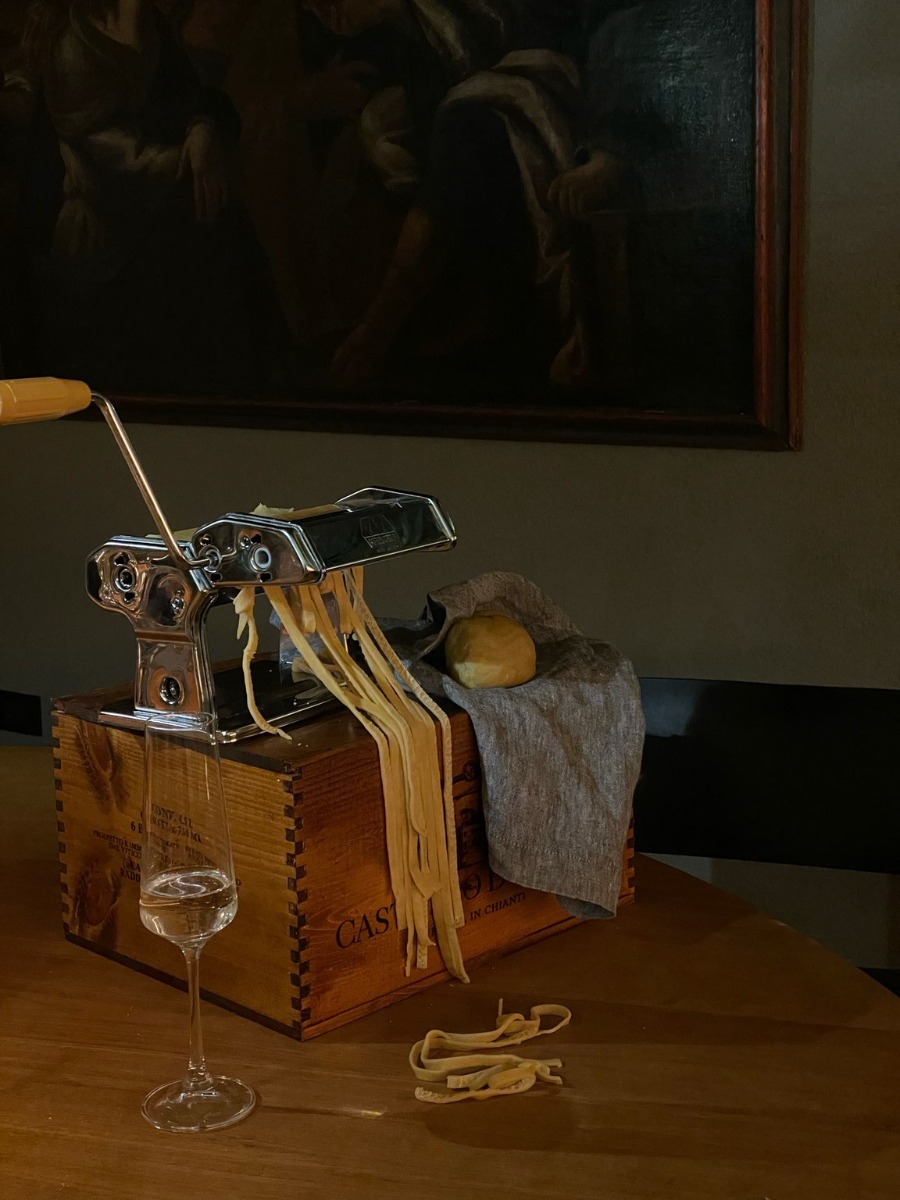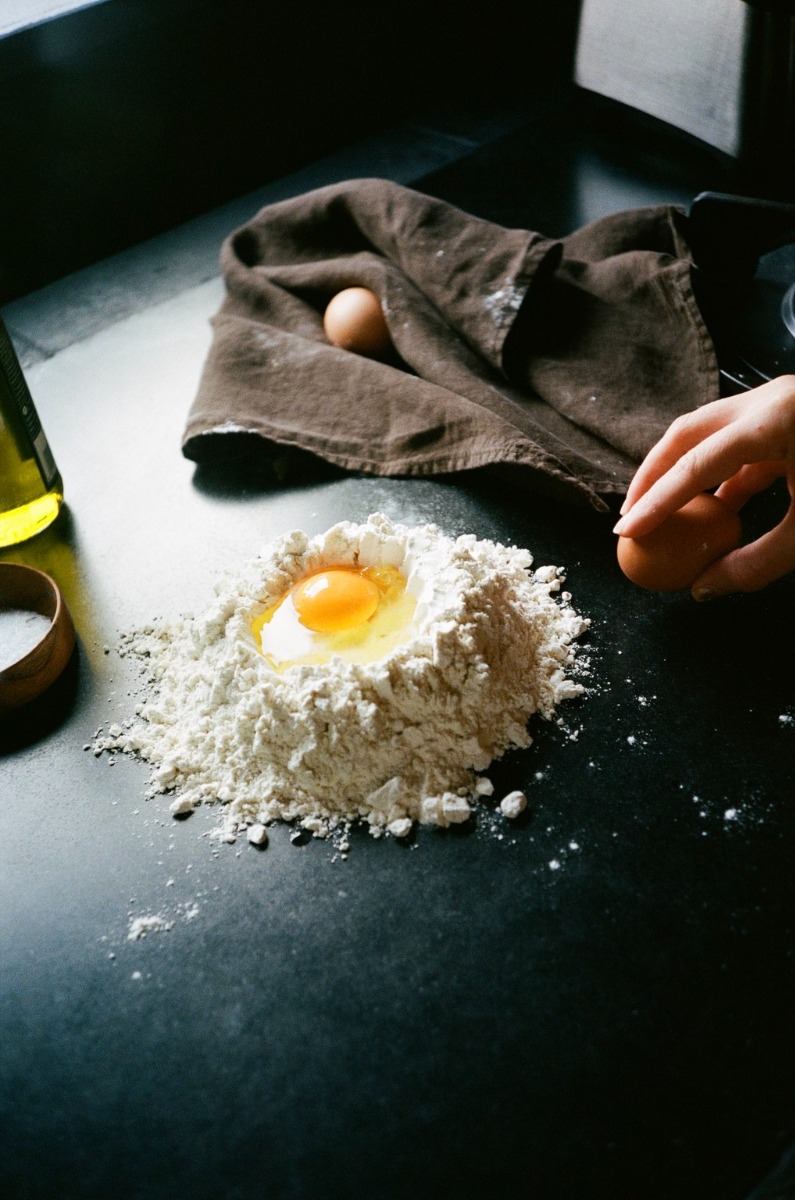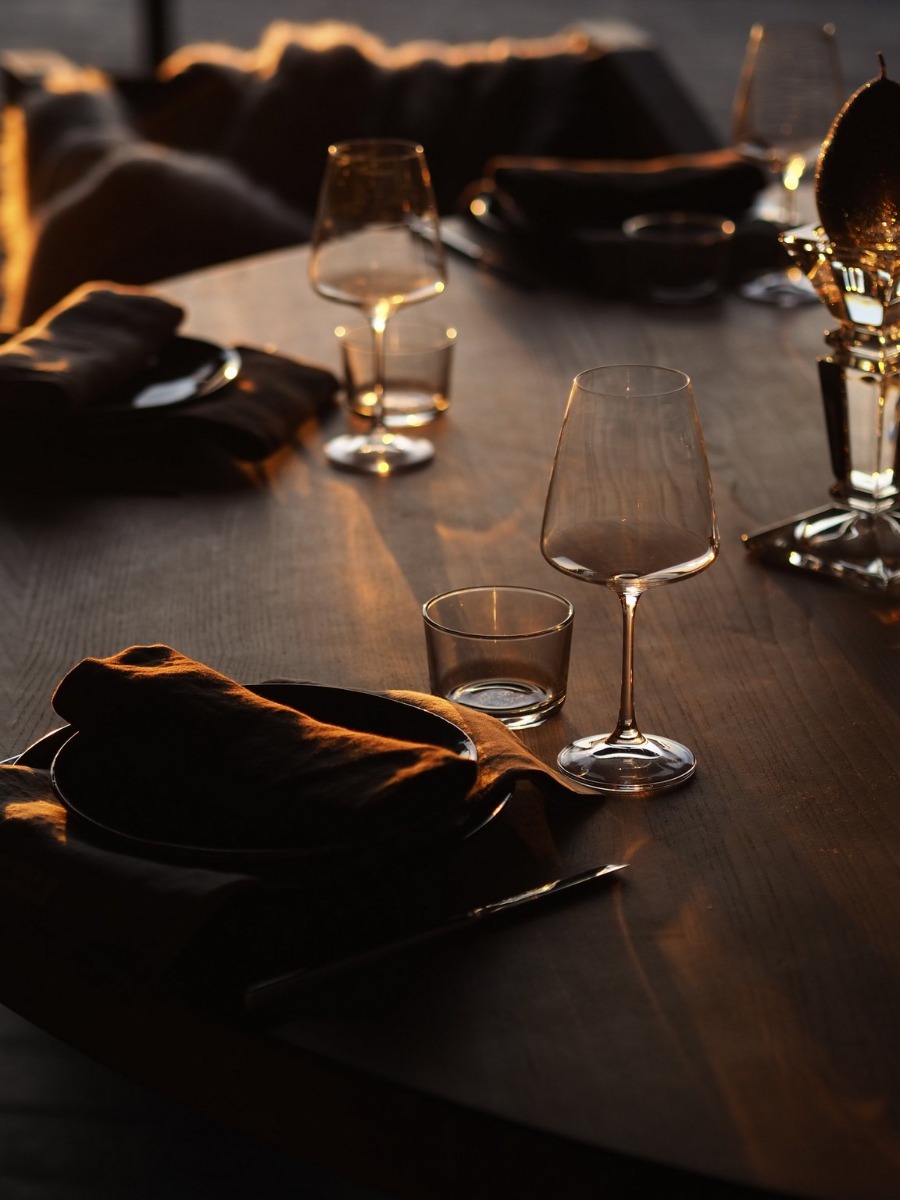The Art of Making Pasta
Balmuir spends the spring and summer of 2022 in Italy. Since Italy is famous for its delicious, fresh pasta, we decided to treat you with instructions on how to make pasta at home like a true Italian. Staying true to the Italian unhurried lifestyle, we recommend reserving a good amount of time for the preparation process, especially when it’s your first time making homemade pasta. However, for those looking to impress family and loved ones, it is possible to prepare the pasta sheets on the day before and only reserve the drying and cutting process for the day of hosting. (No worries, we’ve included the tip in the instructions below.)
Making pasta from scratch can be challenging at first, but after some practice and with the right technique, homemade pasta can become quite an easy way to elevate a pasta recipe. And the best part? It takes only a few simple main ingredients: flour, eggs, salt, water and some olive oil.
Pasta for (at least) 2 servings or 4 smaller servings:
– 300g of all-purpose flour (or Italian 00 pasta flour)
– 5 large eggs (2 eggs and 3 egg yolks)
– 50g of salt
– 1 Tbsp of virgin olive oil or butter for boiling
Other equipment:
– A food scale
– A pasta machine or a kitchen aid pasta attachment
– Optional: a food processor
The dough
Let’s talk first about measurements. Unless you are a pro, the exact ratio of the ingredients is extremely important in creating a delicious and easily workable dough. The general rule of thumb is to add 300g of flour to every 185g of wet ingredients.
1. Put a bowl on a scale. Brake two large eggs in the bowl and add three separated egg yolks. After this, add water until the scale shows 185g. Whisk lightly to mix. Take out a separate bowl and measure out the 300g of flour. Add 1 tsp of salt and mix well.
In the art of making pasta, technique is key. A modern short cut in pasta making is to mix the ingredients in a food processor. However, the old school way of mixing the dough by hand has a special feel to it and can be quite fun once you get the hang of it. Your first instinct might be to mix everything in a bowl, but with pasta the mixing happens directly on the table. Make sure that the surface you are working on is clean and that you have enough room to knead the dough.
2. Start by pouring the flour on to the surface, making it into a small mound. Make a hole in the middle by pressing at the top gently. Your mound should look like a small volcano now.
3. Pour the liquid mix slowly into the hole. There is bound to be some liquid that escapes the hole during this part. You can just scrape the liquid back into the flour. Start folding the flour into the hole, always taking from the outer sides and bringing in the centre.
4. When the dough is mixed (either by hand or a food processor), it should still feel a bit sticky and wet. Start kneading for one minute continuing the technique of grabbing a small piece on the side and folding it to the center. Use pressing and rolling motions. If the flour still sticks to your hands and the surface after the minute, knead in 1 Tbsp of flour. Continue kneading and only after another minute decide if it still needs more.
5. Keep kneading the dough for 10 minutes until completely mixed and dough-like. When it comes to kneading, too much is better than too little. Tip: Pasta dough should feel firmer than your typical bread dough. Go with small folding movements rather than trying to fold the whole piece of dough in half, because it doesn’t stick together as easily as other doughs. Work the dough with your flat palms and try not to break the surface with your fingertips.
6. The dough should look smooth and round now. Wrap it in plastic wrap and leave it to rest in room temperature for 30 minutes.
Pasta sheets
For the next part, you will need a pasta machine, a pasta kitchen aid attachment or a rolling pin. For this instruction, we will use a pasta machine. The goal is to get the dough sheet to a 1 mm thickness.
7. Prep the work surface by covering it with flour to prevent the pasta sheets from sticking to the table.
8. Divide the dough with a knife into four parts and cover the other parts in plastic wrap while waiting to be rolled out.
9. Flatten the piece you are working on with hands or a rolling pin, until it’s about as thick as a pancake.
10. Use the flat, teethless press and put the machine in level 1 (numbers should appear on the turning handle). Feed the sheet through. Fold the rounded sides in, almost like a letter, to create a rectangle shape, add flour and feed through again. Repeat the process until you are satisfied with the squared shape, while keeping the first setting. Tip: Use one hand to pull the sheet out while using the other to turn the handle.
11. Once you are happy with the shape, start tightening the mouth, moving up setting by setting. Feed the sheet once or twice through the press with one setting at a time. Remember to add flour to the surface of the sheet through out the process. Once you reach level 6, the sheet should be thin enough. If the sheet gets too long to manoeuvre with ease, cut it in half.
12. When you have rolled out all of your sheets to the satisfactory thickness, leave them out to dry until the surface feels leather-like. Flip over and repeat to the other side.The drying out should take 15–30 minutes depending on the humidity of the place. Tip: If you have guests coming over, it might be a good idea to prepare the pasta on the day before. In this case, you can only slightly dry the pasta and wrap the sheets between baking paper sheets and plastic wrap and put the sheets in your fridge to wait until the next day.
Cutting it into shape
The next stage of the recipe is cutting the pasta into your desired shape. The egg-based pasta dough made by this recipe tastes the best when used for thin pasta designs, e.g. ribbon shapes or ravioli. The pasta can be cut into ribbons by using a cutter press of the pasta machine or by simply using a knife.
13. With the machine: Take the sheet and simply feed it through the cutter of the machine.
14. With knife: Take the longest opposite sides of the sheet and roll them towards each other to the middle until the two rolls are touching. Start cutting pieces out of the rolled up sheet horizontally (like a cinnamon roll). Adjust the width of the piece to how wide you would like your pasta ribbon to be. Each piece should fold out into a long ribbon.
The boiling
Finally comes the boiling of the pasta. Fresh pasta cooks in way less time than the average dried pasta that you purchase at the store. This means that the pasta has much less time to absorb salt and thus when making fresh homemade pasta, the water needs more salt than you would put regularly.
15. Salt the water to taste and set it to boil an a kettle. Since the water needs more salt than regular pasta, we recommend a ratio of 10-11 g per 1 litre. Add 1 Tbsp of oil or butter into the water.
When the water is boiling add pasta and cook for 1-2 minutes.
Enjoy!



